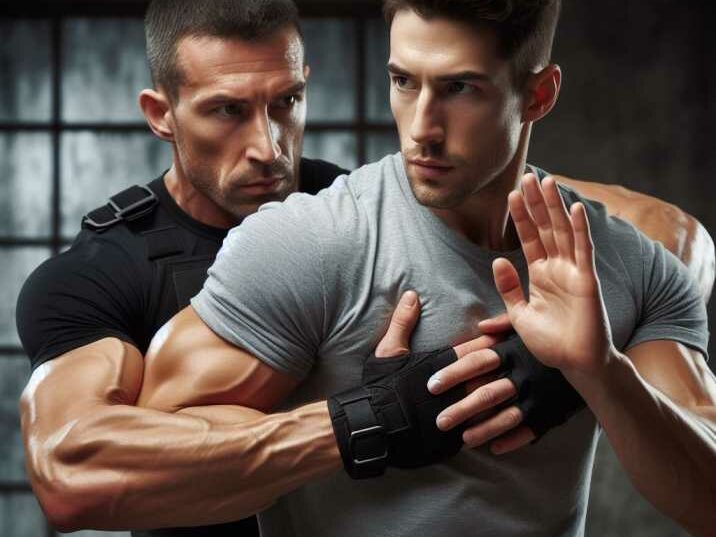Introduction:
Table of Contents
When it comes to self-defense systems, few are as renowned and respected as Krav Maga. Originating from Israel, Krav Maga has gained popularity worldwide for its practicality, efficiency, and real-world applicability. In this comprehensive guide, we will delve into the essence of the Krav Maga fighting style, exploring its origins, techniques, and what sets it apart as a unique fighting style.

Table of Contents
- Introduction
- Understanding the Essence of Krav Maga
- What is Krav Maga?
- Exploring the Origins and Principles
- Origins of Krav Maga
- Historical Background and Evolution
- Principles of Krav Maga
- Embracing Simplicity and Effectiveness
- Techniques of Krav Maga Fighting Style
- Defensive Tactics and Practical Applications
- Training in Krav Maga Fighting Style
- Developing Skills for Real-World Scenarios
- Effectiveness of Krav Maga
- Real-Life Applications and Success Stories
- Evolution of Krav Maga
- Adaptability, Innovation, and Global Reach
- Mental Conditioning
- Cultivating Mindset and Awareness
- Ethical Considerations
- Balancing Self-Defense with Responsibility
- Global Reach
- Building a Worldwide Community of Practitioners
- Innovation in Training
- Leveraging Technology for Enhanced Learning
- Conclusion
- Embracing the Legacy of Krav Maga
- FAQs
- Addressing Common Questions and Concerns
Understanding Krav Maga
What is Krav Maga?
Krav Maga, which translates to “contact combat” in Hebrew, is a self-defense system developed for the Israeli military. Unlike traditional martial arts, Krav Maga focuses on practical techniques that can be quickly learned and applied in real-life situations. Its effectiveness lies in its simplicity and efficiency, making it accessible to people of all ages and fitness levels.
Origins of Krav Maga
Historical Background
Krav Maga traces its roots back to the 1930s when Imi Lichtenfeld developed it in Czechoslovakia to defend the Jewish community against anti-Semitic attacks. After immigrating to Israel, Lichtenfeld further refined the system, adapting it for military and civilian use. Over the years, Krav Maga evolved into a comprehensive self-defense system, drawing influences from various martial arts and combat techniques.
Principles of Krav Maga
Simplicity and Effectiveness
One of the core principles of Krav Maga is simplicity. Techniques are designed to be straightforward and easy to learn, focusing on instinctive movements rather than complex maneuvers. This approach allows practitioners to react quickly and decisively in high-stress situations. Moreover, Krav Maga emphasizes the use of practical techniques that exploit an attacker’s vulnerabilities, making it highly effective for self-defense.
Techniques of Krav Maga Fighting Style
Defensive Tactics
Krav Maga encompasses a wide range of defensive techniques, including strikes, kicks, joint locks, and grappling. Unlike traditional martial arts, which may have strict rules and forms, Krav Maga’s fighting style prioritizes practicality and adaptability. Practitioners are trained to defend against various threats, such as punches, kicks, grabs, and weapons, using instinctive movements and counterattacks.
Training in Krav Maga Fighting Style
Practical Application
Training in Krav Maga involves realistic scenarios and simulations to prepare practitioners for real-life encounters. Classes typically focus on developing situational awareness, improving reflexes, and honing defensive skills under pressure. Additionally, practitioners undergo physical conditioning to enhance strength, endurance, and agility, essential for effective self-defense.

Effectiveness of Krav Maga
Real-World Applications
One of the main reasons for Krav Maga’s widespread popularity is its proven effectiveness in real-world situations. Unlike sport-oriented martial arts, Krav Maga is not bound by rules or regulations, allowing practitioners to use whatever means necessary to defend themselves. Its emphasis on practicality and adaptability makes it suitable for a wide range of scenarios, from street confrontations to armed assaults.
Evolution of Krav Maga
Military Roots
Originally developed by Imi Lichtenfeld for the Israeli military, Krav Maga fighting style underwent significant evolution over the years. From its inception as a means to protect Jewish communities from anti-Semitic violence in pre-World War II Europe to its integration into the training programs of various military and law enforcement agencies worldwide, Krav Maga has continually adapted to meet the changing needs of modern combat.
Adaptability and Innovation
Constant Refinement
One of the hallmarks of Krav Maga is its emphasis on adaptability and innovation. Unlike traditional martial arts, which may adhere rigidly to established forms and techniques, Krav Maga encourages practitioners to constantly refine and evolve their skills based on real-world feedback and experiences. This commitment to continuous improvement ensures that Krav Maga remains relevant and effective in an ever-changing threat landscape.
Mental Conditioning
Mindset and Awareness
In addition to physical techniques, Krav Maga places a strong emphasis on mental conditioning, teaching practitioners to develop a mindset of awareness, assertiveness, and controlled aggression. By instilling confidence and a sense of empowerment, Krav Maga prepares individuals not only to defend themselves physically but also to recognize and avoid potentially dangerous situations whenever possible.
Ethical Considerations
Use of Force
While Krav Maga equips practitioners with the skills to defend themselves effectively, it also emphasizes the importance of ethical considerations and the judicious use of force. Training in Krav Maga includes discussions on legal and moral implications, ensuring that practitioners understand their rights and responsibilities when faced with threatening situations. This holistic approach to self-defense encourages practitioners to prioritize de-escalation and avoidance whenever feasible.
Global Reach
Worldwide Community
Krav Maga’s practicality and effectiveness have led to its widespread adoption beyond its Israeli origins. Today, Krav Maga schools and training centers can be found in countries around the world, reflecting its status as a truly global self-defense system. This international community of practitioners fosters collaboration, cultural exchange, and mutual respect, enriching the practice of Krav Maga and reinforcing its universal principles of empowerment and self-reliance.
Innovation in Training
Technology and Education
Advancements in technology have also played a role in the evolution of Krav Maga training. From online tutorials and instructional videos to virtual reality simulations and interactive training apps, modern technology offers innovative ways to supplement traditional training methods and reach a broader audience. These tools not only enhance the accessibility of Krav Maga but also provide practitioners with additional resources to reinforce their skills and knowledge.
Conclusion
In conclusion, Krav Maga’s fighting style stands out as a practical and effective self-defense system that prioritizes simplicity, efficiency, and real-world applicability. Whether you’re a beginner looking to learn essential self-defense skills or a seasoned martial artist seeking to enhance your repertoire, Krav Maga offers valuable insights and techniques that can empower you to protect yourself and others in any situation.
Incorporating Krav Maga into your training regimen can enhance your physical fitness, improve your confidence, and equip you with practical self-defense skills that can prove invaluable in today’s uncertain world. By understanding the principles, techniques, and applications of Krav Maga, you can embark on a journey of self-discovery and empowerment, embracing a martial art that transcends boundaries and empowers individuals to take control of their safety and well-being.
FAQs
- What makes Krav Maga different from other martial arts?
- Krav Maga prioritizes practicality and effectiveness, focusing on real-world self-defense scenarios rather than sport or tradition.
- Is Krav Maga suitable for beginners?
- Yes, Krav Maga is designed to be accessible to people of all ages and fitness levels, with techniques that are easy to learn and apply.
- Can anyone learn Krav Maga?
- Absolutely! Krav Maga is not limited by age, gender, or physical abilities. With proper training and dedication, anyone can learn to defend themselves effectively.
- Is Krav Maga only for self-defense, or can it be used for fitness too?
- While Krav Maga is primarily a self-defense system, training in it offers excellent physical conditioning, including strength, endurance, and agility.
- Where can I find a reputable Krav Maga instructor?
- Look for certified Krav Maga schools or instructors in your area. Ensure they have proper accreditation and experience in teaching Krav Maga techniques.


